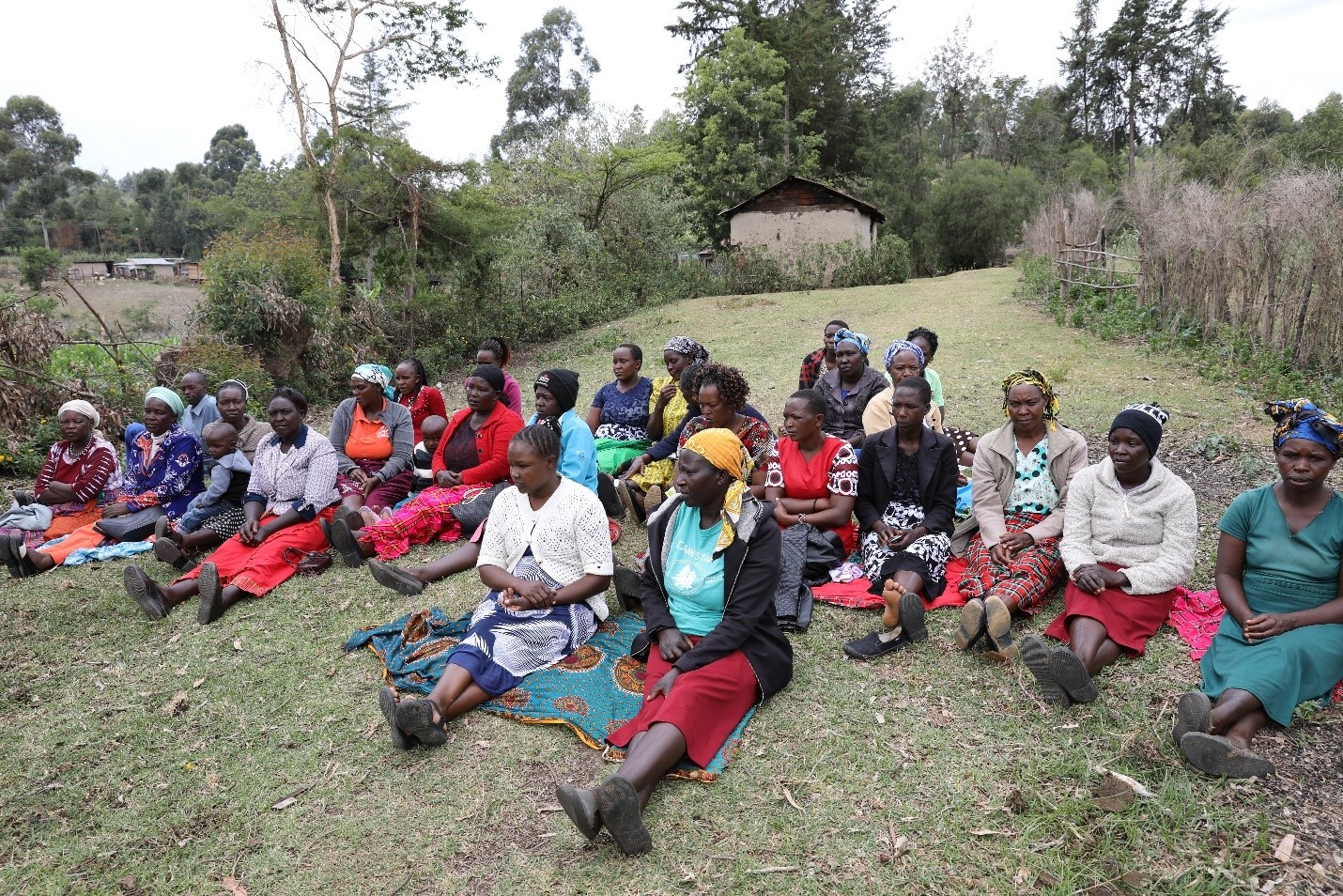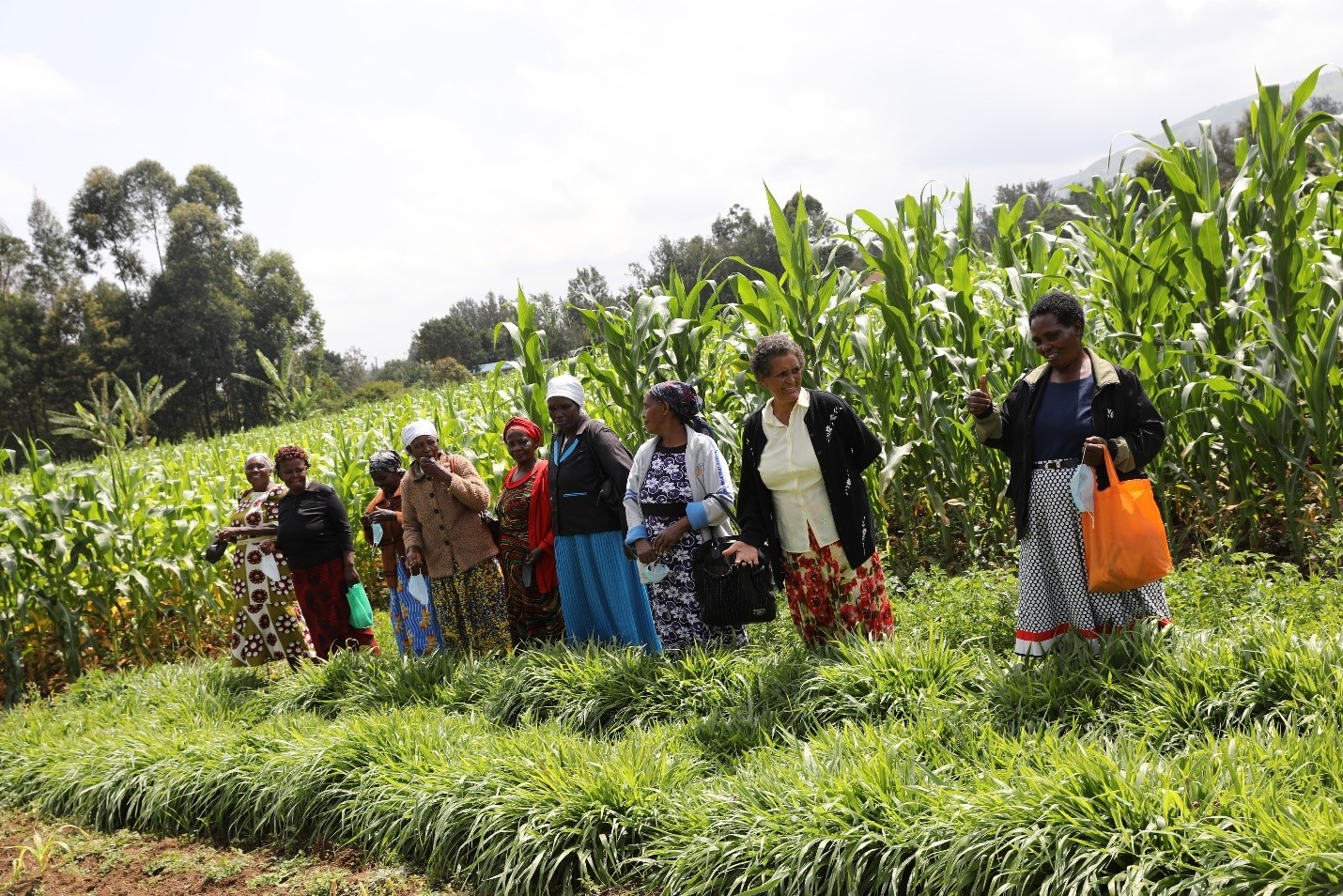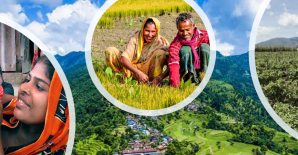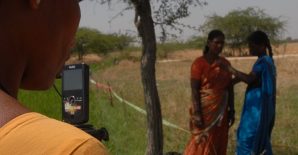Successful efforts to introduce agricultural technologies and practices accommodate farmers’ complex socio-economic conditions. Research shows that women and men often make decisions about and benefit from innovations differently. To capture those differences, researchers and development practitioners need to ask the right questions.
This need explains growing popularity of qualitative approaches in development research. Unlike surveys, which typically pre-determine response categories, qualitative approaches provide an intentional process for surfacing women’s and men’s perspectives, in their own words, and to analyze the stories that emerge.
In Kenya, Virginia Tech’s Feed the Future Innovation Lab for Integrated Pest Management (IPM IL) is exploring farmer stories to understand the benefits and challenges of Push-Pull, a farming system promoted by IPM IL and named for its ability to both repel and trap yield-threatening pests. In collaboration with researchers in East Africa and the United Kingdom, the International Centre of Insect Physiology and Ecology (icipe) developed the Push-Pull system and has been conducting R&D to assess its effectiveness and scale it to smallholder contexts. Push-Pull involves integrating legumes, such as Desmodium, in between maize plants to repel destructive crop pests. Simultaneously, grasses such as Napier or Brachiaria are planted around the border of a field to trap pests before they enter. Push-Pull increases yields and reduces reliance on inorganic pesticides; additionally, grasses recommended to be planted in Push-Pull are high-quality animal fodder that help fatten livestock and improve dairy outputs.
To understand how women farmers assess the benefits and challenges of this technology, the IPM IL and icipe conducted Focus Group Discussions with five women’s farmer groups in Kericho and Nakuru counties who apply Push-Pull. These groups both allowed women to engage with icipe technical specialists, and to share and learn from each other about their use of Push-Pull.
We used a combination of two participatory and qualitative evaluation techniques – the Most Significant Change (MSC) technique and the Integrating Gender and Nutrition within Agricultural Extension Services (INGENAES) Toolkit – to document and analyze women’s narratives, i.e. their personal accounts of how applying Push-Pull had (or had not) changed their lives and livelihoods.

Kapchembua village, Osach Gaa Wig women's group.
“Tell me a story”
In Kenya, we asked group members to tell a story about the most important change resulting from their application of Push-Pull. Their detailed responses highlight a range of spillover effects that might have been missed in a quantitative survey. The women identified not only the expected benefits of higher yields and lower input costs, but also unexpected results, such as the value of grass and fodder sales, group cohesiveness, and improved household health.
Income benefits: “From the sales of [crops, milk, poultry] and grasses (Desmodium and Brachiaria), we are able to build and renovate our houses, and also pay school fees for our children. Not only the push-pull farmers, but also non-adopters are buying the grasses to feed their livestock.” – Woman farmer, Ndarugu village.
Group effectiveness: “The project brings the group together to mobilize resources. For example, [now] the group meets regularly, contributes money, and bought water tankers for 28 members.” – Woman farmer, Ndarugu village.
Productivity: “I used to harvest 8 bags from ½ ha but now I harvest about 15 bags from the same plot. The grasses are helping to improve my dairy farming. Before the project, I had one local cow, which provided only 1 liter per day. Later, I replaced the local cow with improved variety and am able to get 5-6 liters per day.” – Woman farmer, Ndarugu village.
Health: “The health of the family improved because we are not using pesticides. We are able to build new houses or renovate the existing houses. We became educators and our farmers are a learning hub for others. The women’s groups have their own source of money after selling the milk. Even the husbands are very happy because we are generating more income and supporting each other to fulfill home consumption.” – Woman farmer, Taboga village.
Probe further
We also drew upon the Technology Assessment Toolkit to guide data collection and interpretation and to identify opportunities for action around three areas of inquiry¾1) time and labor; 2) food availability, access, quality, and safety; and 3) income and assets. The toolkit suggests questions to probe further into women’s insights about how their everyday lives and families have been affected by using a technology. The toolkit can be used at different points in the R&D process. If used early, the data can guide the selection of which time-consuming or labor-intensive tasks could be addressed by the application of a technology or management practice, while later it can inform technology dissemination strategies.
The evaluation team asked this open-ended question: How has applying Push-Pull affected the amount of time that you spend on pest management? Women’s responses showed how initial costs and time requirements surrounding Push-Pull can be outweighed by lower input costs and labor needs.
“In the beginning, it seemed costly and labor intensive. But, in the second year, it covered a wide area and reduced the weeding time and costs.”— Woman farmer, Ndarugu village.
“It reduced our labor and resources for weeding and use of pesticides.” – Woman farmer, Kimashian village.
“Before we used to send our animals about 10km, looking for a feed. Sometimes we needed cars to transport feeds from other places incurring additional cost. But now, the animals stay at home. Desmodium controls weeds because it covers the ground and hence, saves our time of weeding and saves money for the purchasing of pesticides.”— Woman farmer, Kimashian village.

Taboga village, Githioro women's group on a Push-Pull plot.
Interpretation
The open-ended approach offered by MSC allows respondents to share their own assessments of what is truly “most significant” in the process of exploring a new technology. When the structured guidance and domains of inquiry outlined in the Technology Assessment Toolkit are combined with the MSC approach, the two tools ensure that attention to gender-based constraints and opportunities is at the forefront of story collection and analysis.
Collecting, synthesizing, and analyzing stories of change is a participatory way to challenge many assumptions embedded in project design and implementation. The IPM IL and Virginia Tech’s Women and Gender in International Development have used the two approaches in other activities in Vietnam, Cambodia, and Nepal. There, the research teams worked with in-country programs with both biophysical scientists and social scientists. By working together to identify the themes in the “most significant change” narratives, the scientists’ assumptions about the project’s benefits were challenged. As a result, they adjusted project activities to align better with the preferences participants expressed in their narratives.
For example, in Vietnam, some women farmers who had been reached through IPM IL-sponsored trainings said that participating in such trainings and engaging with project extension staff had changed the productivity and profitability of their family’s farm, but – equally important for them – it had changed their status in the community, since they gained information to share and exchange with their neighbors. However, these same women highlighted that their stories were not typical. The trainings, the respondents noted, were not designed in a way to ensure women were able to actively participate, nor did they fully address women’s questions regarding the cost implications of applying recommended practices. This feedback informed the IPM IL team’s steps on improving and implementing more gender-responsive training programs. This, for example, included the development of a new extension approach that leveraged the existing Women’s Union network in Vietnam to provide a venue for women to learn and discuss the linkages between pest-management, marketing, and farm financial management.
The process of engaging researchers to explore women farmers’ own views and using those to reexamine project objectives was a valuable learning outcome of this activity. The qualitative and participatory evaluation approaches discussed here can improve the design of agricultural technologies, contextualize dissemination strategies based on farmers’ feedback, and ultimately increase the likelihood of adoption.
Further reading:
Manfre, C., D. Rubin, & C. Nordehn. (2017). Assessing How Agricultural Technologies can Change Gender Dynamics and Food Security. Integrated Gender and Nutrition within Agricultural Extension Services (INGENAES).
Theis, S., N. Lefore, R. Meinzen-Dick, & E. Bryan. (2018). “What happens after technology adoption? Gendered aspects of small-scale irrigation technologies in Ethiopia, Ghana, and Tanzania.” Agriculture and Human Values 35: 671-684.
Lutheran World Relief & Cultural Practice, LLC (2017). Facilitation Guide for an Integrated Evaluation Methodology: Most Significant Change and PhotoVoice. Baltimore: LWR.
Authors:
Deborah Rubin is the Co-Director of Cultural Practice, LLC and the Co-Lead for Cross-Cutting Themes with the Feed the Future Innovation Lab for Crop Improvement. Daniel Sumner is the Assistant Director for Virginia Tech’s Women and Gender in Development program and a Gender Specialist supporting the IPM Innovation Lab. Sara Hendery is the Communications Coordinator for the IPM Innovation Lab.
Special thanks to Tadele Tefera, Patrick Kigo, and Desalegne Tadesse from icipe for their valuable data collection work.
Photos by Desalegne Tadesse.
This work was funded in whole or part by the United States Agency for International Development (USAID) Bureau for Food Security under Agreement # AID-OAA-L-15-00001 as part of the Feed the Future Innovation Lab for Integrated Pest Management. Any opinions, findings, conclusions, or recommendations expressed here are those of the authors alone.
This story is part of the EnGendering Data blog which serves as a forum for researchers, policymakers, and development practitioners to pose questions, engage in discussions, and share resources about promising practices in collecting and analyzing sex-disaggregated data on agriculture and food security. If you are interested in writing for EnGendering Data, please contact the blog editor, Dr. Katrina Kosec.



